Alpine Epimedium Epimedium alpinum

ABOUT
Epimedium alpinum, commonly known as bishop's hat, features a delicate and attractive appearance. The plant is distinguished by its foliage, which resembles heart-shaped leaves that are often a vibrant green, sometimes with a reddish tinge. The leaves can change hues throughout the seasons, adopting shades of bronze, red or purple, particularly in the fall. In spring, bishop's hat produces small, intricate flowers that add to its ornamental appeal. These flowers typically have four outer petals and range in color from white to yellow, and sometimes feature a mix of pink or lavender. The blossoms are carried on slender, branching stems that rise above the layer of leaves below. The overall impression of Epimedium alpinum is of a woodland plant with a dainty yet robust charm. Its ground-covering nature and the layering of its heart-shaped leaves make it an appealing choice for gardeners looking to add texture and understated beauty to shaded areas of the landscape.
About this plant
 Names
NamesSynonyms
Alpen-Elfenblume, Alpine Epimedium, Bishop's Hat, Fairy Wings
Common names
Epimedium alpinum L.
 Toxicity
ToxicityTo humans
Epimedium alpinum, commonly known as Alpine barrenwort, is not widely reported to be toxic to humans. There is limited information about its toxicity, and it is generally considered to have a low risk of poisoning when touched or ingested in small quantities. If any plant is consumed in large amounts, it could potentially cause digestive discomfort or an allergic reaction, but specific symptoms of poisoning from Alpine barrenwort are not well-documented. If you suspect poisoning from any plant, it is important to seek medical advice.
To pets
Alpine barrenwort is not widely known to be toxic to pets such as dogs and cats. There is little to no evidence suggesting that this plant poses a significant risk if pets happen to ingest it. However, as with any non-food plant, ingestion of Alpine barrenwort could potentially cause mild gastrointestinal upset in some pets. Symptoms might include vomiting or diarrhea, but again, this is not specifically reported for Alpine barrenwort. It's always wise to monitor your pet and consult a veterinarian if you notice any unusual signs or symptoms after ingestion of any plant material.
 Characteristics
CharacteristicsLife cycle
Perennials
Foliage type
Deciduous
Color of leaves
Green
Flower color
Red
Height
1 foot (30 cm)
Spread
1 foot (30 cm)
Plant type
Herb
Hardiness zones
5
Native area
Europe
Benefits
 General Benefits
General Benefits- Ornamental Value: Epimedium alpinum, commonly known as Alpen barrenwort, is a perennial plant that brings aesthetic appeal to gardens with its delicate flowers and attractive foliage.
- Shade Tolerant: Alpen barrenwort thrives in partial to full shade, making it suitable for underplanting or filling spaces in darker areas of the garden.
- Drought Resistance: Once established, it is quite drought-tolerant, requiring minimal watering in comparison to other garden plants.
- Ground Cover: Its spreading habit makes it an excellent ground cover, helping to reduce weed growth and soil erosion.
- Low Maintenance: Alpen barrenwort requires relatively little maintenance, with no need for frequent pruning or deadheading.
- Deer and Rabbit Resistance: It is generally resistant to deer and rabbits, making it a good choice for gardens plagued by these animals.
- Seasonal Interest: With its spring flowers and changing leaf colors, it provides seasonal interest throughout spring, summer, and sometimes into fall.
 Medical Properties
Medical Properties- Libido enhancement: Epimedium alpinum, commonly known as Alpine epimedium, has been used in traditional medicine as an aphrodisiac to enhance sexual desire.
- Erectile dysfunction: The plant is thought to assist in the treatment of erectile dysfunction by helping to increase blood flow to erectile tissues.
- Osteoporosis treatment: It is believed to have properties that support bone health and may be helpful in the treatment of osteoporosis, particularly postmenopausal osteoporosis. This is attributed to its potential phytoestrogen content.
- Anti-inflammatory effects: Alpine epimedium might possess anti-inflammatory properties that could aid in alleviating inflammation-related conditions.
- Antioxidant properties: The plant may contain compounds that have antioxidant effects, which could help in protecting cells from oxidative stress.
 Air-purifying Qualities
Air-purifying QualitiesThis plant is not specifically known for air purifying qualities.
 Other Uses
Other Uses- Epimedium alpinum, commonly known as Bishop's Hat, can be used as a ground cover in shaded garden areas due to its spreading habit and ornamental foliage.
- The leaves of the Bishop's Hat can be used in floral arrangements to add an exotic touch with their heart-shaped forms and vibrant spring colors.
- Dried leaves of the plant may be incorporated into potpourri mixes for a subtle, earthy scent and to add texture to the blend.
- The flowers of Bishop's Hat can serve as a delicate garnish for desserts and salads when used fresh and in moderation.
- Bishop's Hat's young leaves can be used in fantasy or fairy garden arrangements because of their fairy-wing-like appearance.
- The plant's seed pods can be used in dried craft projects, adding a touch of natural curiosity to wreaths and decorative displays.
- Bishop's Hat can be used as a soft natural dye, yielding colors in a range from yellow to pale green, depending on the mordant used.
- Gardeners may use the spreading nature of Bishop's Hat as a living mulch to suppress weeds and maintain soil moisture in ornamental beds.
- The plant can be positioned alongside water features like ponds or streams where its calming green foliage complements the tranquil water elements.
- Photographers might use the Bishop's Hat as a photogenic backdrop or subject for springtime nature photography because of its attractive blooms.
Interesting Facts
 Feng Shui
Feng ShuiThe plant Epimedium, commonly known as Bishop's Hat, is not used in Feng Shui practice.
 Zodiac Sign Compitability
Zodiac Sign CompitabilityThe plant Bishop's Hat is not used in astrology practice.
 Plant Symbolism
Plant Symbolism- Love and Attraction: Epimedium alpinum, commonly known as Fairy Wings or Bishop's Hat, is often associated with love and attraction. This symbolism comes from its use as a natural aphrodisiac and its heart-shaped leaves.
- Vitality and Life Force: The plant is believed to symbolize vitality and life force, likely because of its historical use in traditional medicine to enhance energy and combat fatigue.
- Longevity and Good Health: With its reputed medicinal properties that are thought to support overall health, Fairy Wings symbolizes longevity and good health.
 Water
WaterBishop's hat prefers consistently moist soil, so it's important to water it regularly without saturating the ground. During active growth in spring and summer, water once or twice a week with about 0.5 gallons per square yard of bedding area, ensuring the soil stays hydrated but not waterlogged. In cooler months, reduce watering to match the plant's reduced needs, providing enough to prevent the soil from drying out completely, which typically equals around 0.25 gallons per square yard every week or so. Always check the top inch of soil before watering—if it feels dry, it's time to water.
 Light
LightBishop's hat thrives in partial to full shade, making it ideal for spots that don't receive harsh midday sun. The best location would be under the light canopy of taller trees or on the north side of buildings where they can receive filtered morning light and avoid intense afternoon rays. However, to keep its foliage vibrant, it should get some dappled sunlight or bright, indirect light throughout the day.
 Temperature
TemperatureBishop's hat is a cold-hardy perennial that can survive temperatures down to around 0 degrees Fahrenheit, making it suitable for many temperate climates. It grows best at temperatures ranging from 50 to 70 degrees Fahrenheit during the growing season. The plant can tolerate summer highs up to about 80 degrees Fahrenheit but should be kept cooler during the rest of the year.
 Pruning
PruningBishop's hat requires pruning to remove dead and damaged foliage and to maintain its shape. The best time to prune is in late winter or early spring before new growth begins. Prune the plant lightly to remove any foliage damaged by winter weather, and cut back the stems if the plant has become too large or unruly. Pruning once a year is usually sufficient to keep the plant looking tidy and encourage healthy new growth.
 Cleaning
CleaningAs needed
 Soil
SoilBishop's hat prefers well-draining, humus-rich soil with a pH of about 6.0 to 7.0. To create the ideal soil mix for this plant, combine equal parts of garden soil, compost, peat moss, and perlite or coarse sand to ensure good drainage and fertility.
 Repotting
RepottingBishop's hat doesn't require frequent repotting and can be done every three to four years. It's best to repot in the spring when the plant shows signs of being root-bound or when the soil has degraded.
 Humidity & Misting
Humidity & MistingBishop's hat thrives best in moderate to high humidity conditions. A relative humidity level of 50% or higher is ideal for this plant, but it can tolerate lower levels without significant harm.
 Suitable locations
Suitable locationsIndoor
Provide filtered light, moist soil, and moderate humidity.
Outdoor
Choose a shaded spot with well-draining soil and water regularly.
Hardiness zone
5-9 USDA
 Life cycle
Life cycleEpimedium alpinum, commonly known as alpine barrenwort, begins its life cycle as a seed, which germinates in a moist, well-drained substrate in spring. The seedling develops into a juvenile plant with a rosette of heart-shaped leaves and establishes a rhizomatous root system that allows it to spread and colonize the surrounding area. As the plant matures, it produces flowering stems bearing small, delicate flowers with a distinctive spur structure, typically blooming in late spring. After pollination, often by insects, the flowers develop into dry, dehiscent capsules that release seeds once mature. The plant undergoes a period of dormancy in winter, retreating to the underground rhizome as the aerial parts die back. With the return of favorable conditions in spring, the alpine barrenwort resumes growth, repeating the cycle.
 Propogation
PropogationPropogation time
Spring to early summer
Propogation: Epimedium alpinum, commonly known as Bishop's hat, is primarily propagated via division, which is best done in late summer or early fall after the plant has flowered. To propagate Bishop's hat through division, carefully dig up a mature clump and gently tease apart the rhizomes, ensuring that each division has a piece of the root system and at least one growth bud. Replant the divisions promptly, ideally spacing them about 12 to 15 inches (30 to 38 centimeters) apart, and water well. This method is effective because it maintains the genetic consistency of the cultivars and allows the new plants to establish themselves before the onset of winter, ready to grow in spring.

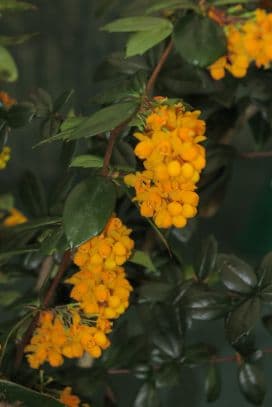
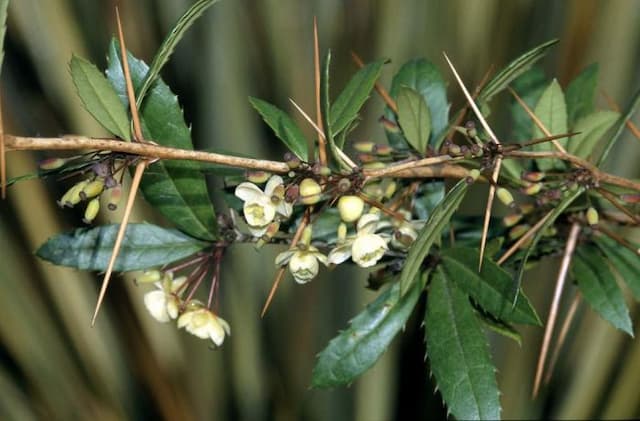
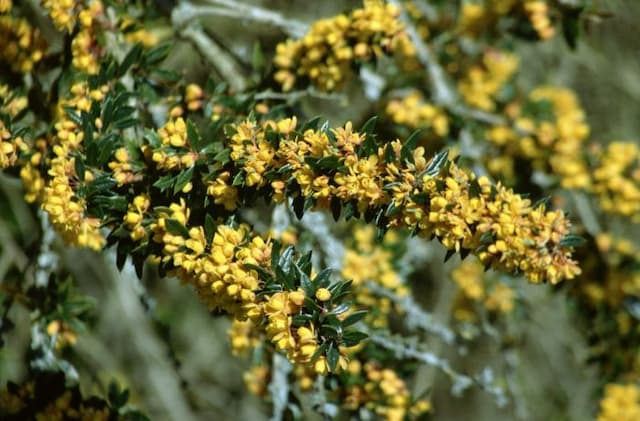
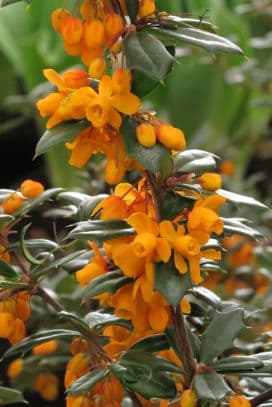
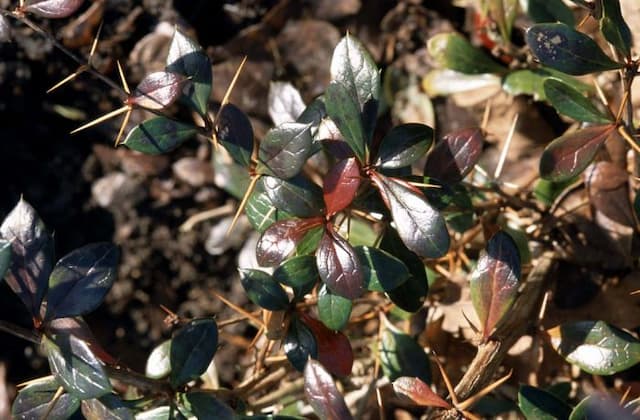


![Japanese barberry [Bonanza Gold]](/_next/image?url=https%3A%2F%2Fplants-admin.emdemapps.com%2Fimages%2Fplants%2F%2Fimages%2F604b5385e413f.png&w=640&q=75)
